National
Unemployment Surges as Trudeau’s Policies Wreak Havoc on the Economy
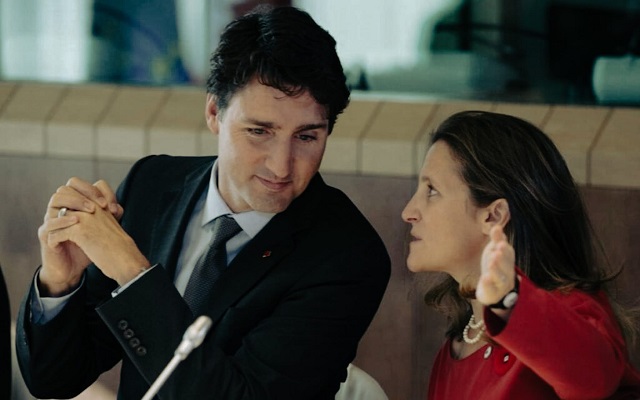
From The Opposition News Network
By Dan Knight
Let’s get real, folks. You look around, and it doesn’t take a PhD in economics to know something is seriously wrong. Unemployment’s ticking up to 6.6%, and wages? They’re not even keeping pace with inflation. Canadians are working harder than ever, yet the cost of everything—from the food you put on the table to the roof over your head—is spiraling out of control. And who’s at the wheel of this runaway train? Justin Trudeau, that’s who.
Trudeau’s government has unleashed a storm of reckless policies that are driving inflation through the roof. And what’s their solution? They’ve forced the Bank of Canada into a corner, leaving them with no choice but to keep rates above 4% interest rates at 4.25%. The result? Ordinary Canadians are feeling the squeeze like never before, struggling just to make ends meet. This isn’t some fluke; it’s a direct consequence of Trudeau’s economic mismanagement.
But here’s the kicker. While Canadians are tightening their belts, Trudeau’s government is flooding the country with immigrants, artificially inflating the GDP so they can keep funding their ridiculous green energy fantasies. That’s right. Instead of focusing on real, sustainable economic growth, Trudeau is pushing the numbers with mass immigration to cover up the economic disaster he’s created.
Think about that. You’re paying more for your groceries, your gas, your mortgage—all because Trudeau wants to make his government look good on paper. But it’s you who’s footing the bill.
Housing Crisis? That’s On Trudeau
Why can’t you afford a house anymore? Why are young families, people who grew up in this country, completely locked out of the housing market? The answer is simple—*it’s Justin Trudeau’s fault*.
Let’s be clear. The Bank of Canada has openly admitted that the housing crisis is a result of excess demand. But here’s what they’re not shouting from the rooftops: *that demand isn’t homegrown*. Trudeau’s open-door immigration policy has flooded the market, pushing housing prices through the roof. He’s not bringing in record numbers of immigrants because it’s good for Canada; he’s doing it to boost GDP artificially. The problem? That so-called “growth” is driving Canadians out of their own housing market.
You’ve got ordinary Canadians, people who’ve worked their whole lives, now completely priced out of homeownership because Trudeau has cranked up demand with his immigration policies. And while he’s busy making his numbers look good, you’re the one left without a chance to buy a home.
And what’s the solution Trudeau offers? Higher interest rates. That’s right. The Bank of Canada has been forced to keep rates above 4% (4.25%) just to cool down the mess Trudeau created. So now, not only are you dealing with sky-high prices, but the higher interest rates mean if you do somehow scrape together enough to buy a house, you’re stuck with a mortgage you can’t afford.
This isn’t just incompetence. It’s a deliberate strategy by Trudeau to artificially inflate the economy through immigration, all while making life harder for the average Canadian. This is the Trudeau legacy: inflated numbers on paper, while regular Canadians suffer in reality.
The Reality of Trudeau’s Policies
Everything costs more under Trudeau—everything. From your grocery bill to your taxes, life has gotten more expensive. But let’s not pretend this is some random economic downturn. This is the result of deliberate policies designed to make Trudeau look like he’s growing the economy. In reality, he’s burning through taxpayer dollars, and making life harder for the people who are actually *keeping this country going*—you.
And here’s the worst part: it’s not going to get better. As long as Trudeau is in charge, you’re going to keep seeing rising costs, more immigration to mask the economic stagnation, and higher interest rates making it impossible for Canadians to get ahead.
It’s time to stop pretending this is some unavoidable consequence of global forces. This is Justin Trudeau’s Canada, and the reality is, you’re being priced out of your own country.
Why Everything Costs More
Here’s the ugly truth: under Trudeau, everything costs more—much more. Groceries? Skyrocketing. Taxes? You can barely keep track of how many you’re paying. Energy bills? Forget it. These price hikes aren’t a coincidence—they’re a direct result of Trudeau’s reckless economic policies. This isn’t an accident; it’s the result of a deliberate plan to reshape Canada’s economy into some kind of climate-change fantasyland, and you’re the one paying for it.
Trudeau’s inflation problem started with his wild spending. The government kept printing and spending money, and soon enough, we had 8.1% inflation. While they love to pat themselves on the back for bringing it down to 2.5%, the reality is prices aren’t coming down. Groceries are still unaffordable. You’re paying 15-20% more for the basics like meat, vegetables, and even milk. Your wallet hasn’t seen any relief, despite their so-called victory lap.
Now, let’s talk about energy. Trudeau’s green energy agenda is a black hole sucking up billions in taxpayer dollars. Billions spent on unproven clean tech projects, and yet, have you seen your energy bills drop? Of course not. They’ve gone up. The kicker is, while Trudeau spends your money on windmills and electric buses that no one can afford, your gas and heating bills have soared. You’re being told to tighten your belt, but the government is lighting taxpayer dollars on fire.
Oh, and don’t forget taxes. Every time you turn around, there’s a new tax or an increase to an existing one. Carbon taxes, fuel taxes—everything is designed to make life more expensive. You’re paying more at the pump because of Trudeau’s so-called climate policies. Every single tax increase hits the working-class Canadian, the family just trying to get by. Meanwhile, Justin and his globalist buddies are laughing all the way to their next climate summit in a private jet.
A Trump Factor to Watch
And if you think this is bad, just wait. If Donald Trump wins re-election, Trudeau’s green pipe dream might come crashing down. Trump has promised to roll back Biden’s climate change initiatives. No more wind farms, no more billions funneled into solar power plants that never seem to get built. If Trump dismantles these climate policies, Trudeau’s entire green energy house of cards falls apart. Canada is deeply tied to U.S. climate cooperation—without it, Trudeau is left holding an empty bag. And what happens then? *You* will pay the price again as the government scrambles to find another way to fund their utopian schemes.
But it’s not just Trudeau’s climate pipe dreams that Trump could affect. Trump has been crystal clear—he’s bringing back tariffs, and Canada’s already weak GDP will take another hit. With Trudeau’s economic mismanagement, we can’t afford to take another blow. If Trump slams down new tariffs on Canadian goods, we’re looking at fewer jobs, higher prices, and an even deeper recession. Trudeau has left Canada exposed, and we’re the ones who will suffer for it.
Trudeau’s Legacy: Pain for the Average Canadian
Let’s face it—Trudeau’s legacy is one of pain for the average Canadian. He’s bloated the government, jacked up immigration numbers to artificially inflate GDP, and used that growth to justify even more spending. But who’s benefiting? Not you. Wages are stagnant, while the cost of living has gone through the roof. Why? Because the demand for everything from housing to groceries is being driven by immigration policies that Trudeau is using to fund his agenda. This isn’t about building a better Canada; it’s about maintaining the illusion of growth by bringing in more people to mask his economic failures.
Why can’t you buy a house? Because Trudeau’s open-door immigration policy has created an artificial demand for housing that has nothing to do with Canadians. The Bank of Canada has admitted it—excess demand is driving up housing costs. But here’s the kicker: this demand isn’t from Canadians trying to buy their first home. It’s from a government that’s using immigration as a crutch for economic growth that doesn’t actually exist. Meanwhile, you, the hard-working Canadian, are priced out of the market. You’re paying more, and Trudeau doesn’t care.
From taxes to groceries to housing, everything costs more under Justin Trudeau. And it’s all part of a grand scheme to push his climate agenda while using *your* hard-earned money to do it. So the next time you see your grocery bill or try to pay your heating bill, remember: this is the Canada Justin Trudeau built. How much longer can Canadians endure this? How much more can you take?

Please subscribe to The Opposition with Dan Knight .
For the full experience, upgrade your subscription.
Business
Ottawa Is Still Dodging The China Interference Threat
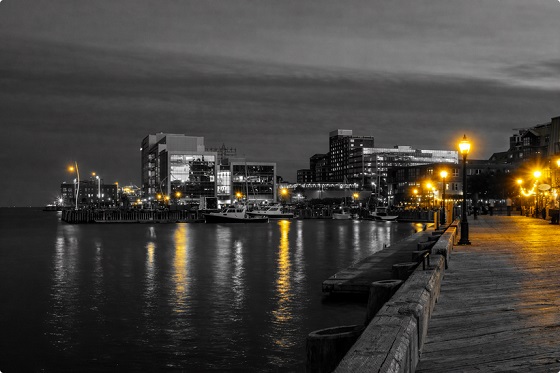
From the Frontier Centre for Public Policy
By Lee Harding
Alarming claims out of P.E.I. point to deep foreign interference, and the federal government keeps stalling. Why?
Explosive new allegations of Chinese interference in Prince Edward Island show Canada’s institutions may already be compromised and Ottawa has been slow to respond.
The revelations came out in August in a book entitled “Canada Under Siege: How PEI Became a Forward Operating Base for the Chinese Communist Party.” It was co-authored by former national director of the RCMP’s proceeds of crime program Garry Clement, who conducted an investigation with CSIS intelligence officer Michel Juneau-Katsuya.
In a press conference in Ottawa on Oct. 8, Clement referred to millions of dollars in cash transactions, suspicious land transfers and a network of corporations that resembled organized crime structures. Taken together, these details point to a vulnerability in Canada’s immigration and financial systems that appears far deeper than most Canadians have been told.
P.E.I.’s Provincial Nominee Program allows provinces to recommend immigrants for permanent residence based on local economic needs. It seems the program was exploited by wealthy applicants linked to Beijing to gain permanent residence in exchange for investments that often never materialized. It was all part of “money laundering, corruption, and elite capture at the highest levels.”
Hundreds of thousands of dollars came in crisp hundred-dollar bills on given weekends, amounting to millions over time. A monastery called Blessed Wisdom had set up a network of “corporations, land transfers, land flips, and citizens being paid under the table, cash for residences and property,” as was often done by organized crime.
Clement even called the Chinese government “the largest transnational organized crime group in the history of the world.” If true, the allegation raises an obvious question: how much of this activity has gone unnoticed or unchallenged by Canadian authorities, and why?
Dean Baxendale, CEO of the China Democracy Fund and Optimum Publishing International, published the book after five years of investigations.
“We followed the money, we followed the networks, and we followed the silence,” Baxendale said. “What we found were clear signs of elite capture, failed oversight and infiltration of Canadian institutions and political parties at the municipal, provincial and federal levels by actors aligned with the Chinese Communist Party’s United Front Work Department, the Ministry of State Security. In some cases, political donations have come from members of organized crime groups in our country and have certainly influenced political decision making over the years.”
For readers unfamiliar with them, the United Front Work Department is a Chinese Communist Party organization responsible for influence operations abroad, while the Ministry of State Security is China’s main civilian intelligence agency. Their involvement underscores the gravity of the allegations.
It is a troubling picture. Perhaps the reason Canada seems less and less like a democracy is that it has been compromised by foreign actors. And that same compromise appears to be hindering concrete actions in response.
One example Baxendale highlighted involved a PEI hotel. “We explore how a PEI hotel housed over 500 Chinese nationals, all allegedly trying to reclaim their $25,000 residency deposits, but who used a single hotel as their home address. The owner was charged by the CBSA, only to have the trial shut down by the federal government itself,” he said. The case became a key test of whether Canadian authorities were willing to pursue foreign interference through the courts.
The press conference came 476 days after Bill C-70 was passed to address foreign interference. The bill included the creation of Canada’s first foreign agent registry. Former MP Kevin Vuong rightly asked why the registry had not been authorized by cabinet. The delay raises doubts about Ottawa’s willingness to confront the problem directly.
“Why? What’s the reason for the delay?” Vuong asked.
Macdonald-Laurier Institute foreign policy director Christopher Coates called the revelations “beyond concerning” and warned, “The failures to adequately address our national security challenges threaten Canada’s relations with allies, impacting economic security and national prosperity.”
Former solicitor general of Canada and Prince Edward Island MP Wayne Easter called for a national inquiry into Beijing’s interference operations.
“There’s only one real way to get to the bottom of what is happening, and that would be a federal public inquiry,” Easter said. “We need a federal public inquiry that can subpoena witnesses, can trace bank accounts, can bring in people internationally, to get to the bottom of this issue.”
Baxendale called for “transparency, national scrutiny, and most of all for Canadians to wake up to the subtle siege under way.” This includes implementing a foreign influence transparency commissioner and a federal registry of beneficial owners.
If corruption runs as deeply as alleged, who will have the political will to properly respond? It will take more whistleblowers, changes in government and an insistent public to bring accountability. Without sustained pressure, the system that allowed these failures may also prevent their correction.
Lee Harding is a research fellow for the Frontier Centre for Public Policy.
Business
Canada needs serious tax cuts in 2026

What Prime Minister Mark Carney gives with his left hand, he takes away with his right hand.
Canadians are already overtaxed and need serious tax cuts to make life more affordable and make our economy more competitive. But at best, the New Year will bring a mixed bag for Canadian taxpayers.
The federal government is cutting income taxes, but it’s hiking payroll taxes. The government cancelled the consumer carbon tax, but it’s hammering Canadian businesses with a higher industrial carbon tax.
The federal government cut the lowest income tax bracket from 15 to 14 per cent. That will save the average taxpayer $190 in 2026, according to the Parliamentary Budget Officer.
But the government is taking more money from Canadians’ paycheques with higher payroll taxes.
Workers earning $85,000 or more will pay $5,770 in federal payroll taxes in 2026. That’s a $262 payroll tax hike. Their employers will also be forced to pay $6,219.
So Canadians will save a couple hundred bucks from the income tax cut in the new year, but many Canadians will pay a couple hundred bucks more in payroll taxes.
It’s the same story with carbon taxes.
After massive backlash from ordinary Canadians, the federal government dropped its consumer carbon tax that cost average families hundreds of dollars every year and increased the price of gas by about 18 cents per litre.
But Carney’s first budget shows he wants higher carbon taxes on Canadian businesses. Carney still hasn’t provided Canadians a clear answer on how much his business carbon tax will cost. He did, however, provide a hint during a press conference he held after signing a memorandum of understanding with the Alberta government.
“It means more than a six times increase in the industrial price on carbon,” Carney said.
Carney previously said that by “changing the carbon tax … We are making the large companies pay for everybody.”
Carney’s problem is that Canadians aren’t buying what he’s selling on carbon taxes.
Just 12 per cent of Canadians believe Carney that businesses will pay most of the cost of his carbon tax, according to a Leger poll. Nearly 70 per cent of Canadians say businesses will pass most or some of the cost to consumers.
Canadians understand that it doesn’t matter what type of lipstick politicians put on their carbon tax pig, all carbon taxes make life more expensive.
Carney is also continuing his predecessor’s tradition of automatically increasing booze taxes.
Ottawa will once again hike taxes on beer, wine and spirits in 2026 through its undemocratic alcohol tax escalator.
First passed in the 2017 federal budget, the alcohol escalator tax automatically increases federal taxes on beer, wine and spirits every year without a vote in Parliament.
Federal alcohol taxes are expected to increase by two per cent on April 1, and cost taxpayers $41 million in 2026. Since being imposed, the alcohol escalator tax has cost taxpayers about $1.6 billion, according to industry estimates.
Canadians are overtaxed and need the federal government to seriously lighten the load.
The biggest expense for the average Canadian family isn’t the home they live in, the food they eat or the clothes they buy. It’s the taxes they pay to all levels of government. More than 40 per cent of the average family’s budget goes to paying taxes, according to the Fraser Institute.
Politicians are taking too much money from Canadians. And their high taxes are driving away investment and jobs.
Canada ranks a dismal 27th out of 38 industrialized countries on individual tax competitiveness, according to the Tax Foundation. Canada ranks 22nd on business tax competitiveness. Canada is behind the United States on both measures.
A little bit of tax relief here and there isn’t going to cut it. Carney’s New Year’s resolution needs to be to embark on a massive tax cutting campaign.
-

 International2 days ago
International2 days agoGeorgia county admits illegally certifying 315k ballots in 2020 presidential election
-

 Energy2 days ago
Energy2 days ago‘The electric story is over’
-

 Business2 hours ago
Business2 hours agoICYMI: Largest fraud in US history? Independent Journalist visits numerous daycare centres with no children, revealing massive scam
-
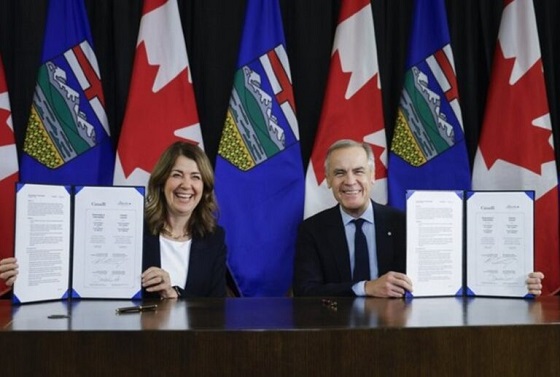
 Energy2 days ago
Energy2 days agoThe Top News Stories That Shaped Canadian Energy in 2025 and Will Continue to Shape Canadian Energy in 2026
-
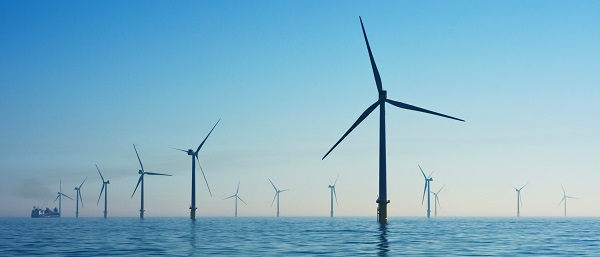
 Daily Caller1 day ago
Daily Caller1 day agoUS Halts Construction of Five Offshore Wind Projects Due To National Security
-
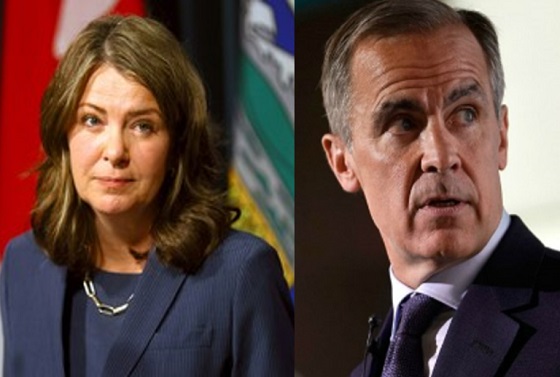
 Alberta1 day ago
Alberta1 day agoAlberta Next Panel calls for less Ottawa—and it could pay off
-

 Daily Caller1 day ago
Daily Caller1 day agoWhile Western Nations Cling to Energy Transition, Pragmatic Nations Produce Energy and Wealth
-
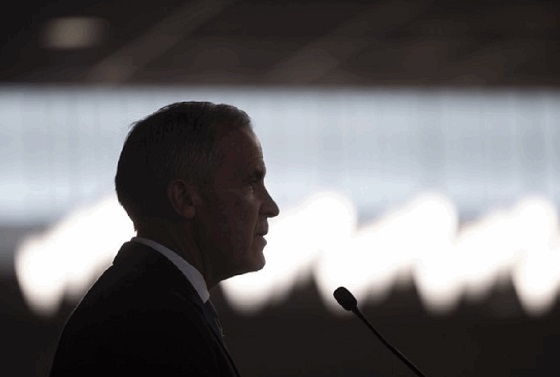
 Fraser Institute2 days ago
Fraser Institute2 days agoCarney government sowing seeds for corruption in Ottawa







